Exploring the creative world of the brilliant Charles de Beistegui would certainly involve more than a single post but Timothy Corrigan‘s ode to the design legend in his LCDQ Legends window for Compas, below, offered an inspiring peek. By referencing Bestegui’s three homes – Paris, Venice and Chateau de Groussay – he tried to “summarize some of Beistegui’s contributions to the world of decorative arts through his discovery and patronage of some of the leading artists and designers of the early 20th century.”
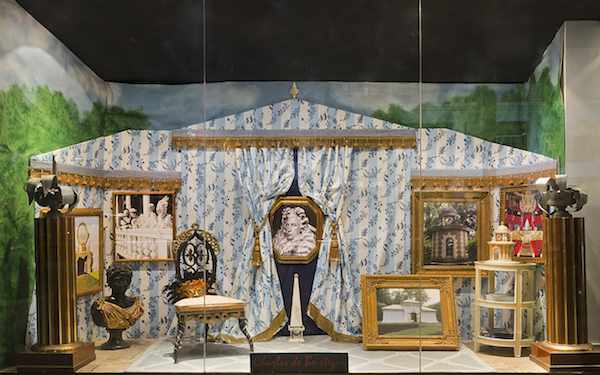
For the eccentric, extravagant art collector and designer’s first famous residence in the 1930’s, a penthouse on the Champs-Élysées, he commissioned Le Corbusier.
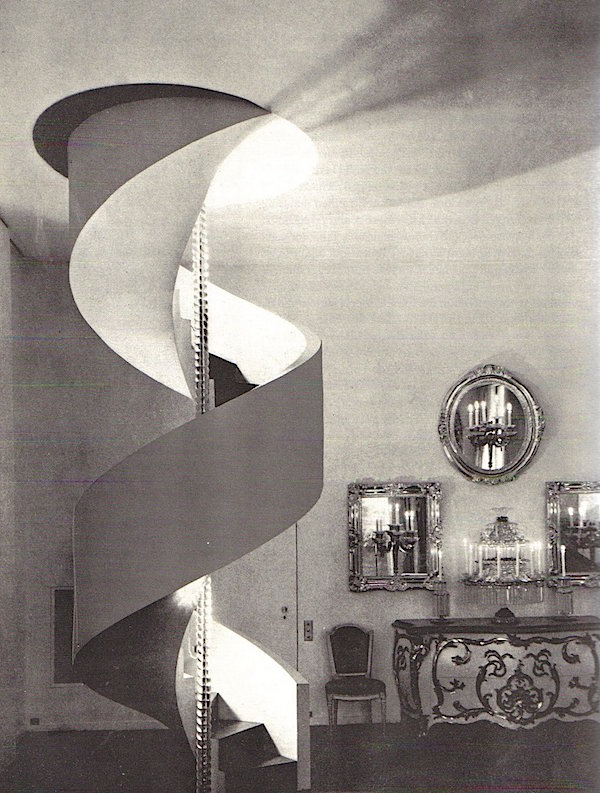
The pièce de résistance of the apartment was perhaps the terrace. Here Beistegui employed Salvador Dali to create a surrealistic setting. There was an electronically operated hedge that parted to reveal a view of the Arc de Triomphe that could also be seen through the top half of the mirror in the image below,
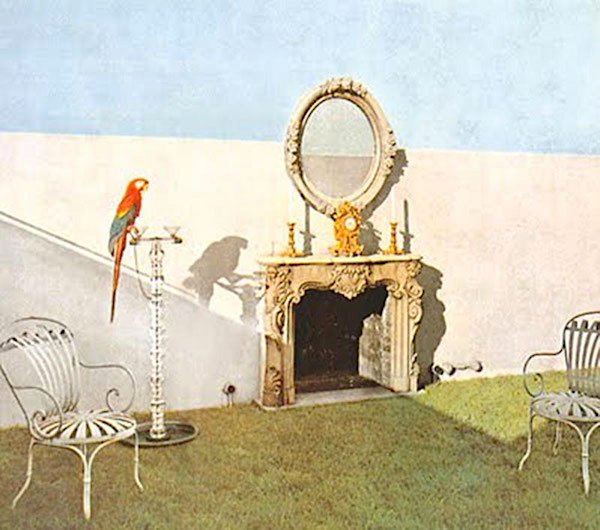
which Tim included in his vignette. The 19th century Blackamoor bust is evocative of Beistegui’s legendary Bal Oriental which he hosted in 1951 in the ballroom of his spectacular Palazzo Labia, just off the Grand Canal in Venice, seen in the image in the upper right. Attended by a who’s who of international society, the masked costume ball was one of the most lavish and celebrated social events of the 20th century.
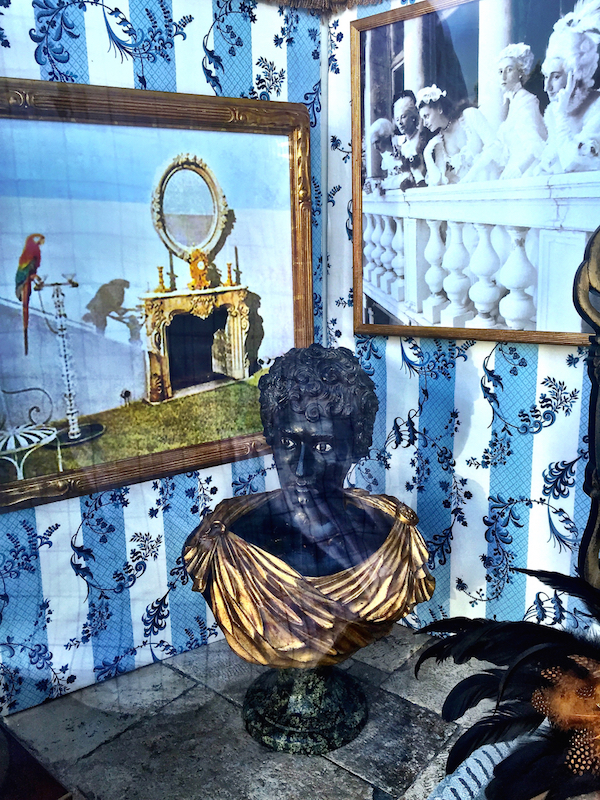
Invitations were sent six months ahead and people waited with baited breath to see if they made the list, which included such luminaries as the Aga Khan, Gene Tierney, Jacqueline de Ribes, Barbara Hutton, Orson Welles, Daisy Fellowes, Desmond Guinness, Fulco di Verdura, the Duchess of Devonshire and many others. The center of Tim’s window featured Beistegui himself festooned for the Bal.
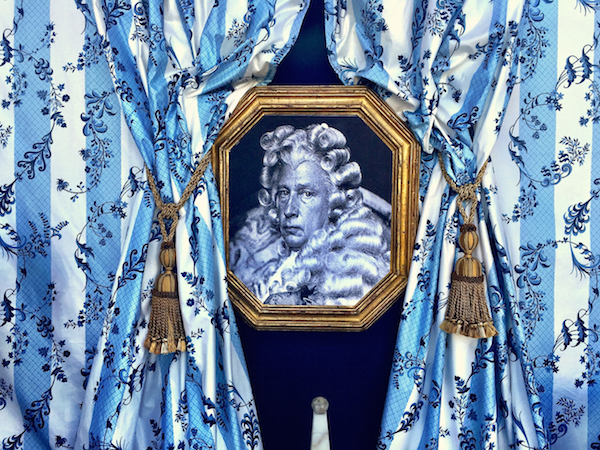
Another view below shows the host in his wig of cascading curls. Adorned in long scarlet robes, he sported platform shoes that raised his normal 5’6″ height a soaring 16 inches.
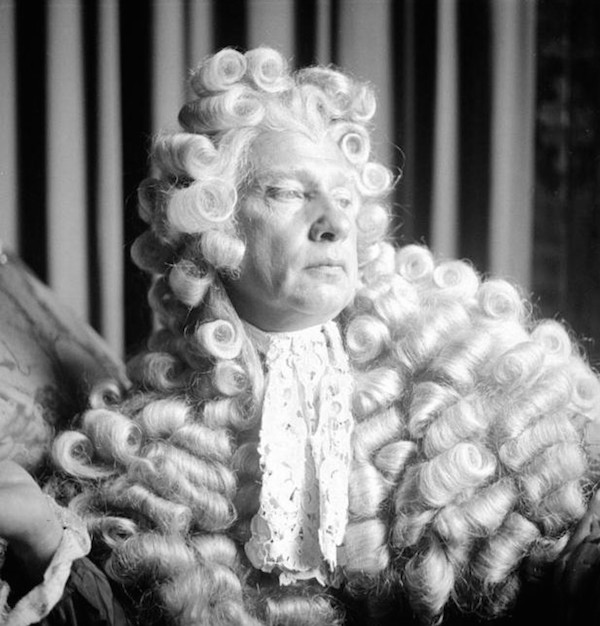
Architect and interior designer Emilio Terry was one of Beistegui’s most trusted design advisers and friends. Included in Tim’s window is a chair by the designer, upholstered in a sumptuous Fortuny fabric, again harkening back to Beistegui’s strong presence in Venice. The highly decorative mask of course references the illustrious Bal Oriental.
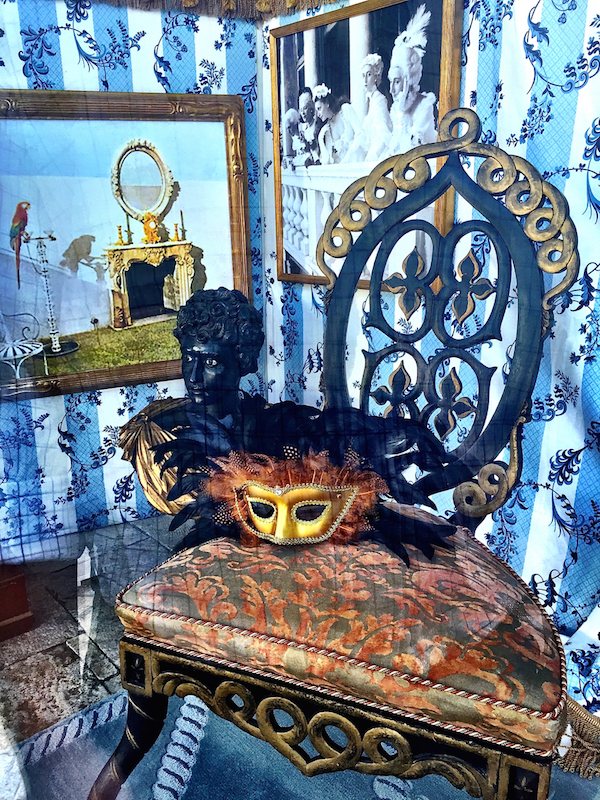
Bestegui’s other great accomplishment was the Château de Groussay. Built in 1815 and purchased in 1939 by Beistegui, he transformed the château inside and out, adding two wings, a theater, a ballroom and several outbuildings. It was here that his style found its greatest expression. With Emilio Terry on board for the interior design, they created the type of eclectic style that we most admire today – bold, personal and yet comfortable. Eschewing the concept of French period rooms, the château in fact felt more English country than French château. The mahogany and brass columns at the edges of Tim’s window (see top photo) are representative of the famed two story library, designed by Cecil Beaton (his own photo of it below). He later copied it for the library of “Henry Higgins” in his set design for the film version of “My Fair Lady.”
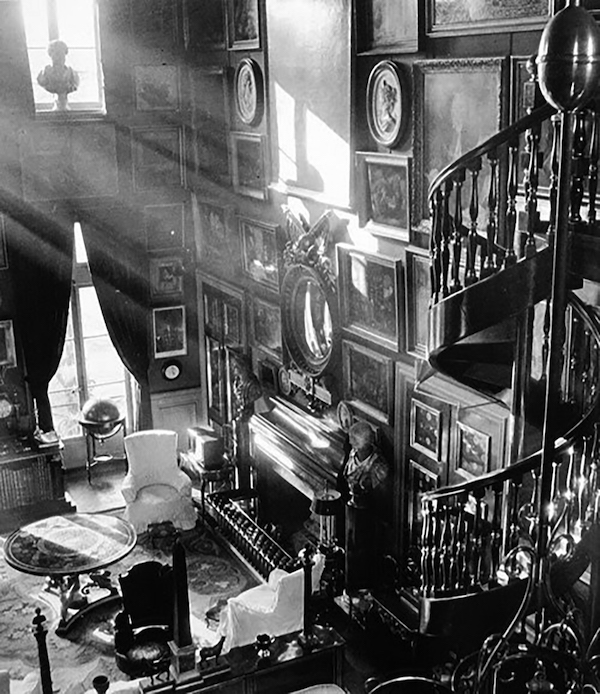 Another view shot in color.
Another view shot in color.
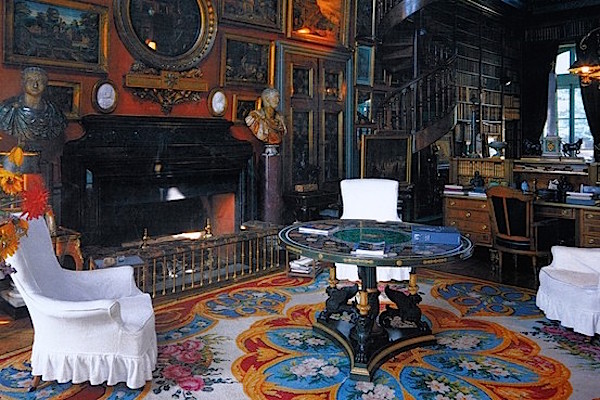
The pair of tin agave plants in lead planters, below on top of the columns, reminded Beistegui of his ancestral home in Mexico (although he was really more European, raised in Spain, France and England). Tim purchased them at the 1999 Sotheby’s auction of the contents of Groussay, described by the New York Times as “A major event in the history and sociology of the decorative arts.”
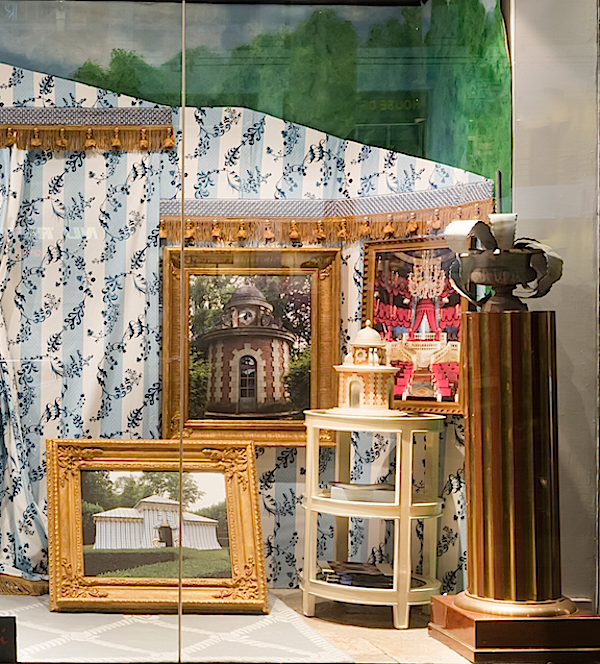
Also purchased at the auction was the model of the Temple Folly at the château, seen both above and below, with photo behind. Beistegui had models made of all the follies there. The folly sits on the Lafayette side table from Tim’s furniture collection for Schumacher, holding the four book catalogue from the Sotheby’s auction.
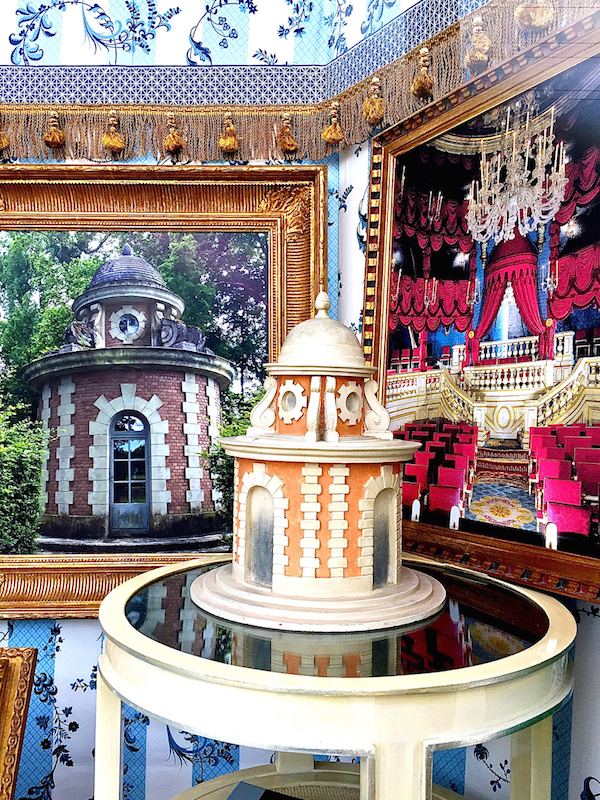
The photo to the right is of the amazing theater Beistegui built at Groussay. As Tim explained, “It remains to this day one of the most beautiful jewel boxes of architecture.” In front of Beistegui’s portrait below is an 18th century marble and bronze obelisk. His passion for these architectonic forms could be seen in his homes and built as follies on the grounds of Groussay.
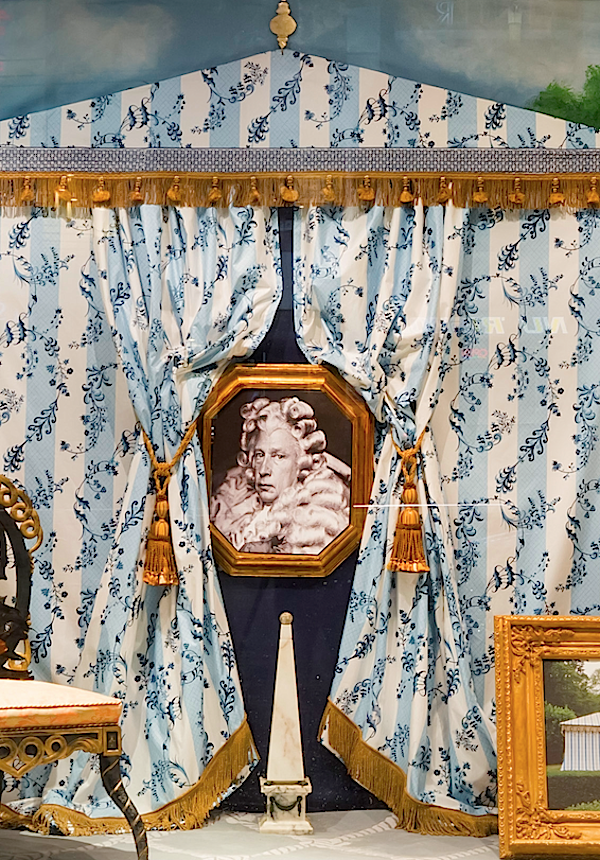 The final photo included in Tim’s window, seen several photos above, below the Temple Folly, is of the iconic “Tente Tartare,” below.
The final photo included in Tim’s window, seen several photos above, below the Temple Folly, is of the iconic “Tente Tartare,” below.
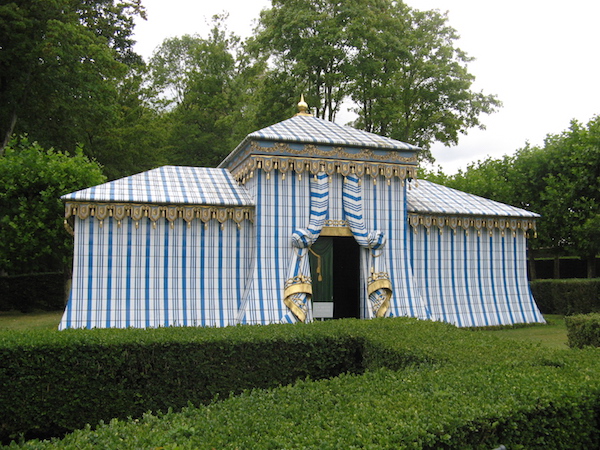
This famous tin tent has served as inspiration for countless designers and architects over the decades as well as for the background in Tim’s window. His own Bagatelle Stripe for Schumacher, trimmed with his Directoire Tape, seen two photos above at top, provided the perfect stripe and sense of whimsy. His Moreaux rug for Patterson, Flynn & Martin featured in the window was inspired by another Beistegui collaborator, Jean-Charles Moreux. Not only was Beistegui himself a remarkable aesthete and designer, but he recognized talent in others and enjoyed supporting and employing these gifted and accomplished artists. Thank you to Tim for reminding us of the brilliant Charles de Beistegui and his coterie of talent.

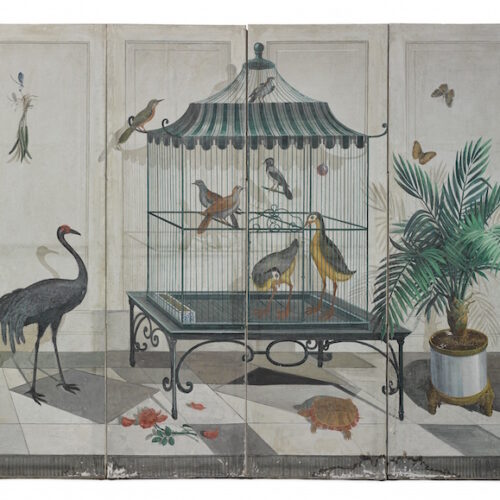
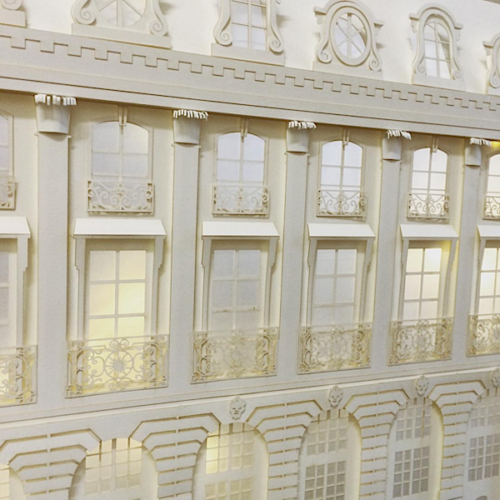
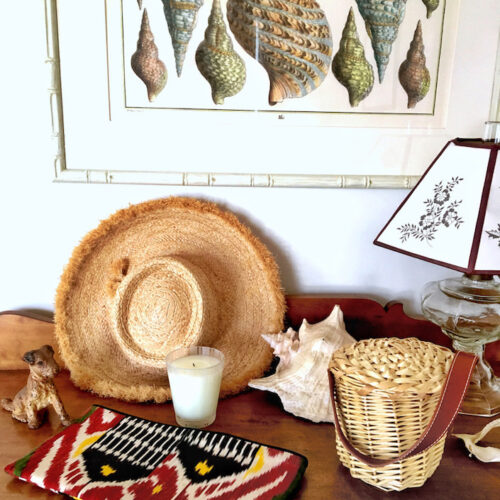
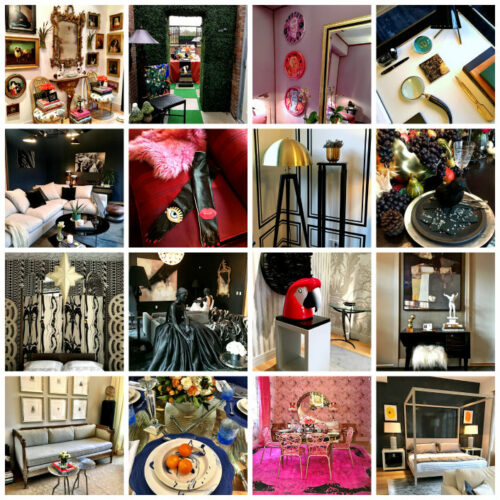
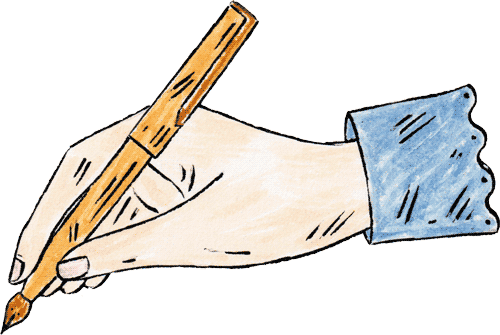
I think I have a new design hero, thanks for this fabulous post :)
Fantastic post and what a window!!! Wonderful. xo
Stacey Timothy accomplished such an incredible design feat with his ode to Charles de Beistegui!
I am very impressed with his artistry!!
xoxo
Karena
The Arts by Karena
Bunnies by Hunt Slonem
I am truly impressed with these amazing designs, I would have loved to have met Charles de Beistegui, I’m sure he was quite the character in his day. Great article.
I was wondering where you found evidence of Salvador Dali’s participation in the design of the roof terrace. This is the first time I have heard that Dali was involved.
Thank you.
Hi Mary – I don’t remember all the sources but two were Simon de Pury’s book The Auctioneer and an article in The Daily Beast by Anthony Haden-Guest.